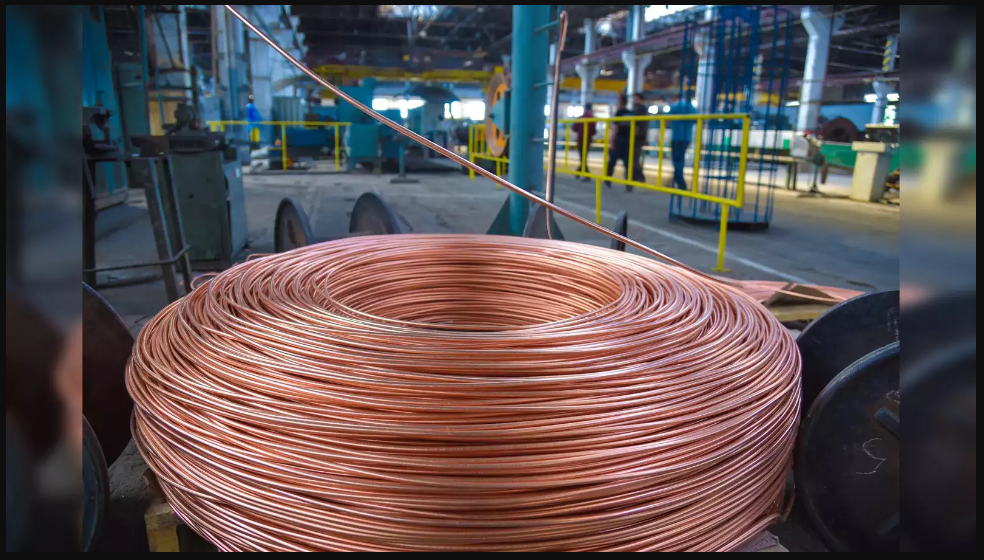As materials costs decline and encourage wider adoption, electric vehicles have far better prospects than the current market pessimism would suggest. This is due to the plummeting prices of nickel and lithium. Copper faces the opposite issue. While current prices are great for miners, they also raise the cost of every product that will accelerate our economy’s decarbonization.
The largest miner in the world, BHP Group Ltd., rose to prominence by securing leading positions in the production of future-use minerals. Thus, the difficulties it is encountering with two essential clean-tech components serve as a sobering warning for the energy transition.
It has long been understood that copper and nickel are essential to a decarbonized economy. The former aids in packing more energy into the grid-scale power storage cells and lithium-ion batteries used in electric cars. The latter is utilized practically everywhere that electricity moves, including transformers, heat exchangers, wires, motors, and turbines.
The International Energy Agency estimates that in order to maintain the global trajectory toward net zero, annual nickel supplies must increase from the current level of approximately 3.4 million tons to over 5 million tons by 2030. From 25 million tons to 35 million tons of copper must be produced. Both metals should ideally be in high demand, with the focus being primarily on copper, where miners produce roughly 10 metric tons for every ton of nickel.
The current situation is almost exactly the opposite. Refining battery-grade nickel from the red soil of eastern Indonesia, Chinese companies are flooding the market with their products, driving down prices by about 40% in the last year and forcing about half of the world’s production into losses. Despite a 7.7 percent decline in copper prices during the same time frame, nearly all mines are turning a profit. Still, that won’t be enough to encourage more production to start up. By 2029, supply is expected to fall 1.2 million tons short of demand, according to Fitch Ratings Inc.
The $2.5 billion impairment to an Australian nickel company that has been struggling for many years before momentarily projecting better prospects from the EV battery revolution is probably the most notable piece of bad news in BHP’s first-half results released on Tuesday. Chief Financial Officer David Lamont said to investors on Tuesday, “We did not anticipate, nor did the rest of the market, the rapid growth of Indonesian supply.” It’s possible that the unit will be shelved until there are indications of a market recovery.

Even so, the better news regarding copper is not all that encouraging. BHP owns Escondida, the largest copper pit in the world, and it occasionally competes with Freeport-McMoRan Inc. to be the world’s largest producer. However, its strategies to deal with the impending supply shortfall that will arise as the world transitions to clean energy are inadequate given the scope of the issue.
Drilling near its underperforming Olympic Dam mine in South Australia has produced some encouraging results, and Escondida’s ore-processing advancements appear to be using roughly $1 billion annually this year and next. That’s a lot less than the $10.6 billion that BHP will eventually need to spend to start producing potash in Canada. In fact, the $1.4 billion in capital expenditures in that division this year, along with the $2.5 billion nickel impairment, indicate that battery metal is consuming almost as much shareholder value as the $4.2 billion allocated to copper.
The closest thing to an upgraded target is coming from South Australia, where the end of this decade may see over 500,000 tons of copper produced annually, as opposed to this year’s forecast range of 310,000 to 340,000 tons. By then, though, there will be an order of magnitude greater shortfall in the global copper market.

It won’t be sufficient. In order to meet the demand resulting from the shift to net zero, approximately $250 billion must be allocated towards growth by 2030, as stated by Mike Henry, the Chief Executive Officer of BHP, during a conference in Barcelona last May. To meet its share of the burden in a global market where it produces roughly one ton out of every fourteen, BHP would need to spend more than $2.5 billion annually; however, its guidance for this year is $900 million.
The issue is that BHP doesn’t have many appealing options to address the shortage of copper. Up to 6.1 million tons of copper may be waiting to be extracted at Cerro Colorado, north of Escondida. However, operations were halted in December due to the mine’s current size, which may require billions of dollars in water desalination costs before it can resume. On paper, the Resolution project in Arizona with Rio Tinto Group appears even more promising, but approval has become complicated due to resistance from nearby First Nations organizations.
As materials costs decline and encourage wider adoption, electric vehicles have far better prospects than the current market pessimism would suggest. This is due to the plummeting prices of nickel and lithium. Copper faces the opposite issue. While current prices are great for miners, they also raise the cost of every product that will accelerate our economy’s decarbonization. The shift will only be slowed to zero by that.



